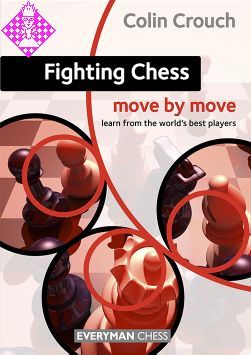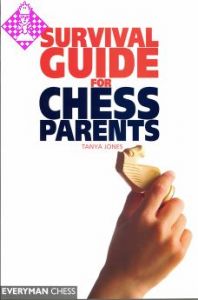Artikelnummer
LXCROFC
Autor
Fighting Chess: Move by Move
learn from the world´s best players
296 Seiten, kartoniert, Everyman, 1. Auflage 2013
Aus der Reihe »Move by Move«
What separates the best chess players from the rest? What gives them the edge over their rivals? Chess legend Vladimir Kramnik believes it’s their fighting skills and the ability to continuously find ways to keep a game alive. Colin Crouch agrees, and is fascinated that the world’s strongest players seem almost unbeatable, even when play appears sharp and double-edged. In this book Crouch examines the tremendous fighting qualities of today’s top players. Analysing key games from 2012, Crouch demonstrates how they give nothing away to their opponents but are always alert to punish any slight errors, and how we can apply these lessons from top-level chess to help us in our own games.
Move by Move provides an ideal platform to study chess. By continually challenging the reader to answer probing questions throughout the book, the Move by Move format greatly encourages the learning and practising of vital skills just as much as the traditional assimilation of knowledge. Carefully selected questions and answers are designed to keep you actively involved and allow you to monitor your progress as you learn. This is an excellent way to improve your chess skills and knowledge.
*Move by Move is interactive. Instead of the age-old lecture-style approach, readers are encouraged to participate by answering a series of questions and exercises in each game.
Move by Move provides an ideal platform to study chess. By continually challenging the reader to answer probing questions throughout the book, the Move by Move format greatly encourages the learning and practising of vital skills just as much as the traditional assimilation of knowledge. Carefully selected questions and answers are designed to keep you actively involved and allow you to monitor your progress as you learn. This is an excellent way to improve your chess skills and knowledge.
·Learn from the world’s best chess players
·Important ideas absorbed by continued practice
·Utilizes an ideal approach to chess study
Dr. Colin Crouch is an International Master, a tremendously experienced tournament player and a highly regarded chess writer. His books have received great acclaim for their thoroughness and originality.*Move by Move is interactive. Instead of the age-old lecture-style approach, readers are encouraged to participate by answering a series of questions and exercises in each game.
| EAN | 9781857449938 |
|---|---|
| Gewicht | 570 g |
| Hersteller | Everyman |
| Breite | 17 cm |
| Höhe | 24 cm |
| Medium | Buch |
| Erscheinungsjahr | 2013 |
| Autor | Colin Crouch |
| Reihe | Move by Move |
| Sprache | Englisch |
| Auflage | 1 |
| ISBN-13 | 978-1857449938 |
| Seiten | 296 |
| Einband | kartoniert |
| Name | Everyman (former Cadogan) |
|---|---|
| Adresse | 10 Northburgh Street London EC1V 0AT Großbritannien |
| dcaddelman@yahoo.com |
Verantwortlicher Importeuer:
| Name | Schachversand Niggemann |
|---|---|
| Adresse | Schadowstraße 5 48163 Münster Deutschland |
| info@schachversand.de | |
| Internet | www.schachversand.de |
„Fighting Chess move by move” by IM Colin Crouch, published by Everyman Chess is another title within the ”move by move“ series!
Everyman chess has been very successful in recent years, publishing books en mass for an extraordinary wide range of players! From beginners up to strong players looking to revisit their repertoire, everything was covered! Recently they launched a ”new“ series called ”move-by-move“ which I like most! Within a certain topic, they try to answer the reason why moves are good and are played in a particular position! I read certain books out of this series (i.e. Move by move: Caro-Kann, Sicilian Taimanov, Sicilian Scheveningen) and it was a delighting way of reading opening manuals.
The author, International Master Colin Crouch already wrote many great books, among them one which I read almost three times (Analyse your Chess). His style of writing is always encouraging if it comes to study the most complex and difficult things in chess! I very much like to read his book and I’m sure you’ll have the same pleasure with it!
Well, the book is (as far as I see) a new type within the ”move-by-move“ series. Before they mostly covered openings (move by move: Ruy Lopez, Caro-Kann, Sicilian Taimanov etc.) and Biographies (e.g. Capablanca, Kramnik) but this is the first to cover a whole series of tournaments! Although there are still certain ”pure“ tournament books available, I found the way Mr. Crouch gathered and presented the most entertaining and at the same time instructive games highly innovative! The usual scheme followed in tournament books is:
- Gather some pictures
- Analyse each game purely objectively, i.e. looking for the best theoretical continuation etc.
Although in ”Fighting Chess move by move“ he may have excluded the pictures, he did something I missed literally speaking in all tournament books! The psychological factor during the games! By following the typical structure of the (move by move) MBM series, he’s posing question to the reader, which he have to answer, by using all his chess wisdom! Additionally he tries to include the current tournament situation, the chemistry between both players as well as some personal psychological factors (i.e. The Zürich match between Kramnik & Aronian) in his annotations! All this combined makes this book a tremendously instructive work for everyone who wants to know how to play fighting chess! It’s not about being godlike; it’s not even about having good theoretical skills! In this very book, you’ll hopefully learn that even the very best among us, the leading elite in the chess world, are just human, and have weaknesses as well! On the highest level it’s not so much about getting anything out of the opening, it’s more of using the opponent’s specific weaknesses, to grind him down and take the full point home!
Content:
1 Vladimir Kramnik Levon Aronian, Zürich, April 2012
2 World Championship, Anand Gelfand, Moscos, May 2012
3 Seventh Tal Memorial, Moscow, June 2012
Although the content might look rather small, it contains 25 (!) fully annotated games which might even be sufficient to fill a second book! I cannot say more but to read this book! It’s all about feeling the difference between the good players and the very best!
Conclusion:
It’s a must-have to be honest! This book contains so many important elements for the tournament player, how to prepare for an opponent (by knowing his weaknesses) as well as to see how to exploit seemingly active moves! To see whether a move is just good-looking or really purposeful! My recommendation goes from 1000 (although it might be a bit difficult to understand everything) to 2xxx! Everyone should be able to gain something out of it, especially for his own practice!
Rating: (4/5) Recommended!
Lukas Wedrychowski
www.DailyChess.org lectures & reviews
Everyman chess has been very successful in recent years, publishing books en mass for an extraordinary wide range of players! From beginners up to strong players looking to revisit their repertoire, everything was covered! Recently they launched a ”new“ series called ”move-by-move“ which I like most! Within a certain topic, they try to answer the reason why moves are good and are played in a particular position! I read certain books out of this series (i.e. Move by move: Caro-Kann, Sicilian Taimanov, Sicilian Scheveningen) and it was a delighting way of reading opening manuals.
The author, International Master Colin Crouch already wrote many great books, among them one which I read almost three times (Analyse your Chess). His style of writing is always encouraging if it comes to study the most complex and difficult things in chess! I very much like to read his book and I’m sure you’ll have the same pleasure with it!
Well, the book is (as far as I see) a new type within the ”move-by-move“ series. Before they mostly covered openings (move by move: Ruy Lopez, Caro-Kann, Sicilian Taimanov etc.) and Biographies (e.g. Capablanca, Kramnik) but this is the first to cover a whole series of tournaments! Although there are still certain ”pure“ tournament books available, I found the way Mr. Crouch gathered and presented the most entertaining and at the same time instructive games highly innovative! The usual scheme followed in tournament books is:
- Gather some pictures
- Analyse each game purely objectively, i.e. looking for the best theoretical continuation etc.
Although in ”Fighting Chess move by move“ he may have excluded the pictures, he did something I missed literally speaking in all tournament books! The psychological factor during the games! By following the typical structure of the (move by move) MBM series, he’s posing question to the reader, which he have to answer, by using all his chess wisdom! Additionally he tries to include the current tournament situation, the chemistry between both players as well as some personal psychological factors (i.e. The Zürich match between Kramnik & Aronian) in his annotations! All this combined makes this book a tremendously instructive work for everyone who wants to know how to play fighting chess! It’s not about being godlike; it’s not even about having good theoretical skills! In this very book, you’ll hopefully learn that even the very best among us, the leading elite in the chess world, are just human, and have weaknesses as well! On the highest level it’s not so much about getting anything out of the opening, it’s more of using the opponent’s specific weaknesses, to grind him down and take the full point home!
Content:
1 Vladimir Kramnik Levon Aronian, Zürich, April 2012
2 World Championship, Anand Gelfand, Moscos, May 2012
3 Seventh Tal Memorial, Moscow, June 2012
Although the content might look rather small, it contains 25 (!) fully annotated games which might even be sufficient to fill a second book! I cannot say more but to read this book! It’s all about feeling the difference between the good players and the very best!
Conclusion:
It’s a must-have to be honest! This book contains so many important elements for the tournament player, how to prepare for an opponent (by knowing his weaknesses) as well as to see how to exploit seemingly active moves! To see whether a move is just good-looking or really purposeful! My recommendation goes from 1000 (although it might be a bit difficult to understand everything) to 2xxx! Everyone should be able to gain something out of it, especially for his own practice!
Rating: (4/5) Recommended!
Lukas Wedrychowski
www.DailyChess.org lectures & reviews
<A class="inhalt" href="../../../dbbilder/leseprob/LXCROFC_Der Neue Tag 20131005.pdf"><b>Rezension "Kampfschach" von H. Däubler, Oktober 2013 im PDF-Format</b></A>
In "Fighting Chess" aus der Serie "move by move" von Everyman Chess geht der Autor IM Colin Crouch in erster Linie der Frage nach, was das Spiel der weltbesten Schachspieler von anderen mit der Folge unterscheidet, dass sie fast nie verlieren bzw. mehr Siege als andere Akteure im Spitzenschach einfahren. Er widmet sein Interesse somit den Fähigkeiten der Top-Großmeister, die jene der Konkurrenz übertreffen.
Nach seiner Erkenntnis machen die Spieler der Weltelite kaum Fehler, und dies selbst dann, wenn sich eine Partie hochverwickelt auf des Messers Schneide befindet. Wenn sich Crouch mit dieser Feststellung begnügen würde, wäre dies für ein Werk wie "Fighting Chess" ein bisschen wenig. Macht er aber auch nicht. Er geht weiter in die Tiefe, indem er prüft, welche Fähigkeiten es konkret sind, über die die Spitzenspieler verfügen und das Beste aus jeder Stellung herausholen lassen. Seine Ergebnisse breitet er vor dem Leser aus, um ihn zur Förderung der eigenen Spielstärke von den Fähigkeiten der Weltbesten profitieren zu lassen.
Crouch hat 27 im Jahr 2012 im Spitzenschach gespielte Partien zur Grundlage des Buches gemacht (WM-Finale, Zürich und Tal-Memorial in Moskau). Für die meisten Leser dürfte "Fighting Chess" eine Sammlung von Partien sein, die sehr ausführlich und unter Beachtung des Prüfinteresses, unter dem das Buch steht, kommentiert worden sind. Auch wenn das Werk in der "move by move"-Reihe erschienen ist und somit grundsätzlich der Linie eines Gespräches zwischen einem Schachlehrer und seinem Schüler folgt, ist dies in diesem Fall nicht wirklich prägend. Das Stilmittel wird zwar eingesetzt, aber nicht in der sonst für Bücher dieser Serie gewohnten Intensität. Ich sehe mich eher an Werke erinnert, die nach dem Prinzip "der Leser ist am Zug" geschrieben worden sind. Die Kommentierung der Partien wird nämlich durch textlich hervorgehobene Fragestellungen unterbrochen, die sich eben an den Leser richten. Die sogleich fortgesetzte Kommentierung gibt die Antwort, bevor sie dann wieder auf neue Aspekte eingeht. Kritisch betrachtet könnten die meisten Fragestellungen auch fehlen, ohne dass der Leser in der Kommentierung einen Bruch feststellen würde. Er wird somit - eben nach dem og. Prinzip - in die Zugpflicht genommen und muss sich zunächst selbst Gedanken zu dem machen, was der Autor dann gleich darauf thematisieren wird.
Ich möchte deshalb als Zwischenfazit feststellen, dass "Fighting Chess" für mich in erster Linie eine Sammlung sehr qualifizierter Partien ist, allesamt im Spitzenschach gespielt und höchst aktuell. Die Kommentierung legt einen Schwerpunkt auf die Frage, worin in den jeweiligen Entscheidungen der Spitzenspieler in den Partiesituationen besondere Fähigkeiten zum Tragen kommen.
Den Käufer erwartet keine einem wissenschaftlichen Gutachten ähnliche Darstellung, auch wenn Crouch einem gewissermaßen analytischen Interesse folgen mag. Das Werk ist im Gegenteil auch unterhaltsam gestaltet, wozu nicht zuletzt eher narrative Textpassagen beitragen.
So möchte ich ein zweites Zwischenfazit ziehen und "Fighting Chess" als unterhaltsame Darstellung der angewandten Schachstrategie und -taktik bezeichnen.
Die Buchsprache ist Englisch. Der Leser sollte nach meiner Einschätzung über recht gesicherte Fremdsprachkenntnisse verfügen, wenn er denn alles gut verstehen möchte.
Fazit: "Fighting Chess" ist ein eher untypisches Buch aus der "move by move"-Reihe von Everyman Chess. Ich empfehle es in erster Linie demjenigen zum Kauf, der seine Freude an qualifiziert kommentierten Partien hat und begleitend hinsichtlich seiner strategischen und taktischen Fähigkeiten profitieren möchte.
Uwe Bekemann, BdF
April 2013
In "Fighting Chess" aus der Serie "move by move" von Everyman Chess geht der Autor IM Colin Crouch in erster Linie der Frage nach, was das Spiel der weltbesten Schachspieler von anderen mit der Folge unterscheidet, dass sie fast nie verlieren bzw. mehr Siege als andere Akteure im Spitzenschach einfahren. Er widmet sein Interesse somit den Fähigkeiten der Top-Großmeister, die jene der Konkurrenz übertreffen.
Nach seiner Erkenntnis machen die Spieler der Weltelite kaum Fehler, und dies selbst dann, wenn sich eine Partie hochverwickelt auf des Messers Schneide befindet. Wenn sich Crouch mit dieser Feststellung begnügen würde, wäre dies für ein Werk wie "Fighting Chess" ein bisschen wenig. Macht er aber auch nicht. Er geht weiter in die Tiefe, indem er prüft, welche Fähigkeiten es konkret sind, über die die Spitzenspieler verfügen und das Beste aus jeder Stellung herausholen lassen. Seine Ergebnisse breitet er vor dem Leser aus, um ihn zur Förderung der eigenen Spielstärke von den Fähigkeiten der Weltbesten profitieren zu lassen.
Crouch hat 27 im Jahr 2012 im Spitzenschach gespielte Partien zur Grundlage des Buches gemacht (WM-Finale, Zürich und Tal-Memorial in Moskau). Für die meisten Leser dürfte "Fighting Chess" eine Sammlung von Partien sein, die sehr ausführlich und unter Beachtung des Prüfinteresses, unter dem das Buch steht, kommentiert worden sind. Auch wenn das Werk in der "move by move"-Reihe erschienen ist und somit grundsätzlich der Linie eines Gespräches zwischen einem Schachlehrer und seinem Schüler folgt, ist dies in diesem Fall nicht wirklich prägend. Das Stilmittel wird zwar eingesetzt, aber nicht in der sonst für Bücher dieser Serie gewohnten Intensität. Ich sehe mich eher an Werke erinnert, die nach dem Prinzip "der Leser ist am Zug" geschrieben worden sind. Die Kommentierung der Partien wird nämlich durch textlich hervorgehobene Fragestellungen unterbrochen, die sich eben an den Leser richten. Die sogleich fortgesetzte Kommentierung gibt die Antwort, bevor sie dann wieder auf neue Aspekte eingeht. Kritisch betrachtet könnten die meisten Fragestellungen auch fehlen, ohne dass der Leser in der Kommentierung einen Bruch feststellen würde. Er wird somit - eben nach dem og. Prinzip - in die Zugpflicht genommen und muss sich zunächst selbst Gedanken zu dem machen, was der Autor dann gleich darauf thematisieren wird.
Ich möchte deshalb als Zwischenfazit feststellen, dass "Fighting Chess" für mich in erster Linie eine Sammlung sehr qualifizierter Partien ist, allesamt im Spitzenschach gespielt und höchst aktuell. Die Kommentierung legt einen Schwerpunkt auf die Frage, worin in den jeweiligen Entscheidungen der Spitzenspieler in den Partiesituationen besondere Fähigkeiten zum Tragen kommen.
Den Käufer erwartet keine einem wissenschaftlichen Gutachten ähnliche Darstellung, auch wenn Crouch einem gewissermaßen analytischen Interesse folgen mag. Das Werk ist im Gegenteil auch unterhaltsam gestaltet, wozu nicht zuletzt eher narrative Textpassagen beitragen.
So möchte ich ein zweites Zwischenfazit ziehen und "Fighting Chess" als unterhaltsame Darstellung der angewandten Schachstrategie und -taktik bezeichnen.
Die Buchsprache ist Englisch. Der Leser sollte nach meiner Einschätzung über recht gesicherte Fremdsprachkenntnisse verfügen, wenn er denn alles gut verstehen möchte.
Fazit: "Fighting Chess" ist ein eher untypisches Buch aus der "move by move"-Reihe von Everyman Chess. Ich empfehle es in erster Linie demjenigen zum Kauf, der seine Freude an qualifiziert kommentierten Partien hat und begleitend hinsichtlich seiner strategischen und taktischen Fähigkeiten profitieren möchte.
Uwe Bekemann, BdF
April 2013
Mehr von Everyman
-
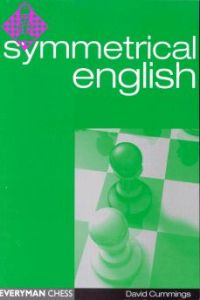 Symmetrical English17,95 €
Symmetrical English17,95 € -
 Tactical Training29,50 €
Tactical Training29,50 € -
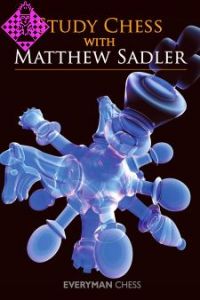 Study Chess with Matthew Sadler19,95 €
Study Chess with Matthew Sadler19,95 € -
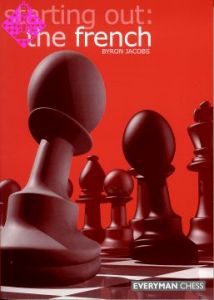 Starting Out:The French18,95 €
Starting Out:The French18,95 € -
 Tactical Training in the Endgame23,95 €
Tactical Training in the Endgame23,95 € -
 Taimanov's Selected Games16,95 €
Taimanov's Selected Games16,95 € - Mehr von Everyman

